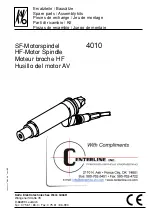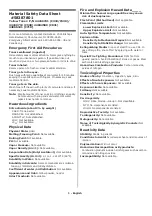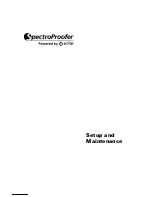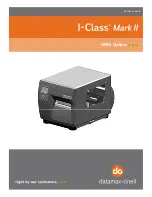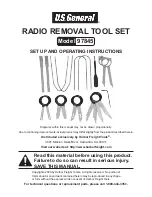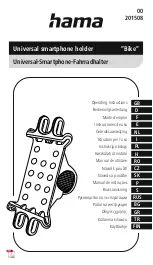
ComfortFlame.us.com
900568-00E
13
INSTALLATION
Continued
Figure 18 - External Regulator on Propane/LP Supply Tank with
Vent Pointing Down
External
Regulator
Vent
Pointing
Down
Propane/LP
Supply Tank
Figure 19 - Gas Connection
** Minimum inlet pressure for purpose of input adjustment.
Sediment Trap
3" Minimum
Cap Pipe Tee
Nipple Joint
Natural Gas
From Gas Meter
(5" W.C.** to 10.5"
W.C. Pressure)
Propane/LP
From External
Regulator
(11" W.C.** to 14"
W.C. Pressure)
WARNING: This appliance requires a 3/8" NPT
(National Pipe Thread) inlet connection to the pres-
sure regulator.
WARNING: A qualified service person must con-
nect fireplace to gas supply. Follow all local codes.
CAUTION: Never connect propane/LP fireplace di-
rectly to the propane/LP supply. This fireplace requires
an external regulator (not supplied). Install the external
regulator between the fireplace and propane/LP supply.
CAUTION: Use only new, black iron or steel pipe.
Internally-tinned copper tubing may be used in certain
areas. Check your local codes. Use pipe of 1/2" diam-
eter or greater to allow proper gas volume to fireplace.
If pipe is too small, undue loss of volume will occur.
WARNING: Never connect this appliance to private
(non-utility) gas wells. This gas is commonly known
as wellhead gas and does not have odorants and may
have impurities, and variations in BTU content. The
use of well-head gas will void the manufacturer’s
warranty to this appliance.
INSTALLING GAS PIPING TO FIREPLACE LOCATION
Installation Items Needed
Before installing fireplace, make sure you have the items listed below.
• external regulator for propane/LP unit only (supplied by installer)
• piping (check local codes)
• sealant (resistant to propane/LP gas)
• equipment shutoff valve *
• test gauge connection *
• sediment trap (optional)
• tee joint
• pipe wrench
• approved flexible gas line with gas connector (if allowed by local
codes) (not provided)
* An equipment shutoff valve with 1/8" NPT tap is an acceptable
alternative to test gauge connection.
For propane/LP units, the installer must supply an external regulator.
The external regulator will reduce incoming gas pressure. You must
reduce incoming gas pressure to between 11" and 14" of water. If
you do not reduce incoming gas pressure, heater regulator damage
could occur. Install external regulator with the vent pointing down as
shown in
Figure 18
. Pointing the vent down protects it from freezing
rain or sleet.
Installation must include an equipment shutoff valve, union and
plugged 1/8" NPT tap. Locate NPT tap within reach for test gauge
hook up. NPT tap must be upstream from fireplace
(see
Figure 19
)
.
IMPORTANT:
Install equipment shutoff valve in an accessible location.
The equipment shutoff valve is for turning on or shutting off the gas
to the appliance.
WARNING: Use pipe joint sealant that is resistant
to liquid petroleum (LP) gas.
Check your building codes for any special requirements for locating
equipment shutoff valve to fireplaces.
Apply pipe joint sealant lightly to male NPT threads. This will prevent
excess sealant from going into pipe. Excess sealant in pipe could
result in clogged fireplace valves. Never use sealant on flare threads.
We recommend that you install a sediment trap in supply line as
shown in
Figure 19
. Locate sediment trap where it is within reach for
cleaning. Install in piping system between fuel supply and fireplace.
Locate sediment trap where trapped matter is not likely to freeze. A
sediment trap traps moisture and contaminants. This keeps them from
going into fireplace gas controls. If sediment trap is not installed or
is installed wrong, fireplace may not run properly.





























